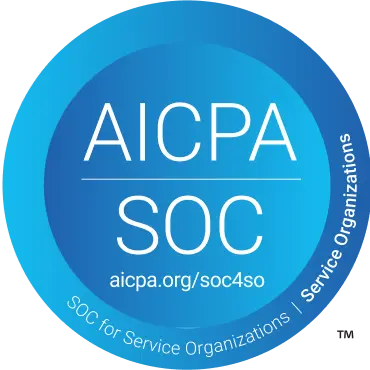Experienced a significant decline in gross receipts during the 2021 calendar quarter, more than a 20% decline versus the same quarter of 2019, and a 50% decline in the 2020 calendar.
The Employee Retention Credit
Learn more about the payroll tax refund meant to help eligible businesses that kept employees on payroll during the pandemic.
Update from the IRS on the ERC
On Thursday, September 14, 2023, the IRS announced (IR-2023-169) a processing moratorium on new ERC claims. Under the IRS moratorium, ERC claims received after Sept. 13, 2023, will not be processed until the moratorium ends.
Overview
As a small to medium-sized business, it’s likely that you were negatively impacted by COVID-19, and you certainly weren’t alone.
Due to financial suffering across the country, Congress passed the Coronavirus Aid, Relief, and Economic Security (CARES) Act to help get businesses back on their feet — with a special section called the Employee Retention Credit (ERC), to help businesses like yours.
The ERC Explained
The Employee Retention Credit (ERC) was developed to encourage and support businesses who retained existing employees throughout 2020 and for the first three quarters of 2021 by offering a generous payroll tax refund through the IRS.
Eligible businesses can receive a refund of up to $5,000 per employee for all of 2020 and up to $7,000 per employee kept on the payroll for each quarter for Q1 through Q3 of 2021*. That’s a total refund of up to $26,000 per employee kept on your payroll.
DISCLAIMER
* Your business could potentially receive up to $26,000 per employee under the legal maximum limit. However, the average refund amount is lower for most companies and depends on the accuracy of your payroll records, involvement in other relief programs, healthcare statements, owing back taxes, any deductions you may have previously taken, and other factors. These factors may also reduce the gross refund amounts, which may mean that net refund is lower.
Designed to reward businesses
The program rewards those who kept employees on payroll in 2020 and 2021.
The ERC wasn’t widely used until recently
The ERC has since undergone expansions and multiple amendments by Congress.
Capital for any business need
The ERC refunds are most often received as a check from the US Treasury.
Established by the CARES Act
The same relief bill that created PPP loans also created the ERC.
How do I file?
Once you find out if your business qualifies, you’ll need to fill out the specific tax forms for 2020 and the applicable quarters of 2021.
Getting the refund generally takes several months. This is why it’s important to make sure that your forms are filled out without error. Incomplete or incorrectly filled out forms will be rejected, and may result in your business having to re-file.
To file, you'll need a few required documents and the right information:
Required documents:
Required information:
In response to the IRS moratorium on new ERC claims, we've adjusted our operations to continue serving existing customers while mirroring the pause taken by the IRS for new customers.
Meanwhile, we're advising businesses to monitor ongoing situations and to utilize various resources provided by the IRS to navigate this change.
How do you calculate the full-time equivalent employees in your business?
Take your number of part-time employees and multiply it by the number of part-time hours they worked per period. Then, divide that by 120, which represents minimal full-time hours for the period.
[(# of part-time employees x total # of part-time hours worked per period / 120]
For further clarification, click here.
Can my business claim PPP and ERC?
The answer is yes, but with a catch: The ERC cannot be claimed on wages paid with funds from a forgiven PPP loan. That said, you can claim the ERC on any wages that weren’t covered with a PPP loan.
The PPP was designed as a forgivable loan, but ERC returns the payroll taxes that your business has already paid.
Eligibility Requirements
You must be a “small business”
The government has defined a “small business” as:
Any employer that operates a trade, business, or a tax-exempt organization.
Having fewer than 100 full-time employees (calculated from 2019) for the 2020 ERC refund.
Having fewer than 500 full-time employees (calculated from 2019) for the 2021 ERC refund.
Your small business may be eligible for the ERC if it meets either of the following criteria:
Had operations that were impacted by government orders due to COVID-19, resulting in limitations of commerce, travel or meetings. If your business was impacted due to a government order that caused one or more of the following, you may qualify:
- Your business operations were interrupted.
- There were interruptions with your supply chain.
- There was an inability to access equipment.
- Your business had a limited capacity to operate.
- You were unable to work with your vendors.
- Your hours of operation were reduced.
- Your available services offered to customers were limited or reduced.
Eligible industries claiming the ERC payroll refund
While the ERC is available to SMBs of any kind, certain industries were hit harder by the pandemic, including restaurants, healthcare, construction, new business startups, manufacturing and more. The ERC is also available to non-profit organizations and churches, too. Although the ERC was originally designed for businesses, it is a tax refund that is applicable for eligible businesses who kept employees on payroll during the pandemic.
Is the ERC credit taxable?
The refund is not taxable under Internal Revenue Code § 280C. However, because these refunds are payroll tax credits, they’ll reduce the amount your business can expense for payroll in each qualifying quarter.
However, the reduction of expenses could result in an increase in net income — which is potentially taxable. State tax laws regarding the ERC refund vary, so it’s recommended to consult with a tax professional before adjusting your books.
Our principles
Visionary exploration
We explore uncharted territories, harnessing innovative approaches to discover new financial solutions.
Strategic implementation
We leverage cutting-edge technology to implement seamless solutions with precision and effectiveness.
Partnership
synergy
Our success thrives on collaborative partnerships, offering personalized support to foster business growth.
Ethical
progression
We develop compliance-driven and long-term solutions to give SMBs access to the tools reserved for big business.
Restrictions Apply. Must provide notice within 5 days of any audit. Excludes audits related to inaccurate or misleading information provided by customer, or failure by customer to fully cooperate with Innovation Refunds or the tax professional. See Customer Agreement for full terms and conditions. Innovation Refunds does not provide tax or legal advice.
Audit protection assurance
We want you to have confidence when working with us. Our customers have our support in case of any unexpected IRS audits related to the work by our independent tax professionals.* If that happens, as long as you’ve done your part, Innovation Refunds will provide an independent tax attorney to support you through the audit process at no extra cost.
If, due to errors made by our independent tax professionals, there are any penalties owed to the IRS, we've got your back. Innovation Refunds will take care of those penalties for you.
We’ll refund any fee you’ve paid to us proportionate to the amount of the payback due to the IRS. We're here to support you every step of the way.






